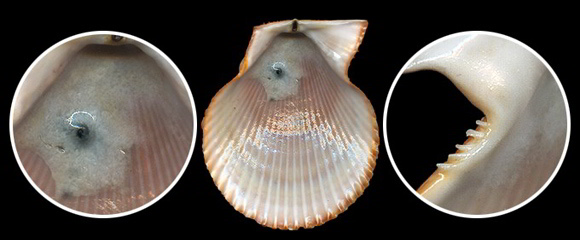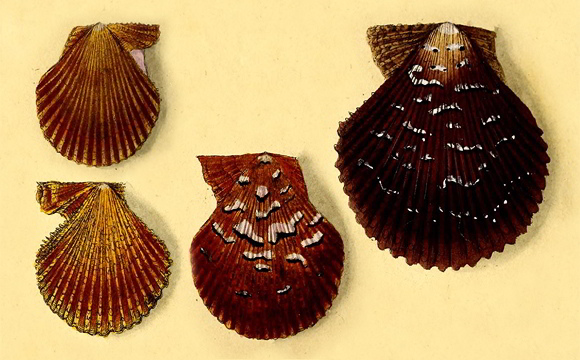
Norway to Mauritania, to Mediterranean. On hard substrate, from lower intertidal (locally common) down to continental slope (rare). Young specimens are attached to their support by their byssus. Later, they will get rid of it and begin a free life.
Original taxon: Ostrea varia.
Above, the species in E. Donovan: The natural history of British shells, vol. I, London 1799, plate I.
« Many beautiful kinds of this species are found on our coasts. Some are of an uniform, obscure, reddish or purple colour, without any marking; some are violet, and others bright yellow, or orange. […] Pennant says, this species is often found in oyster-beds, and dragged up with them. »
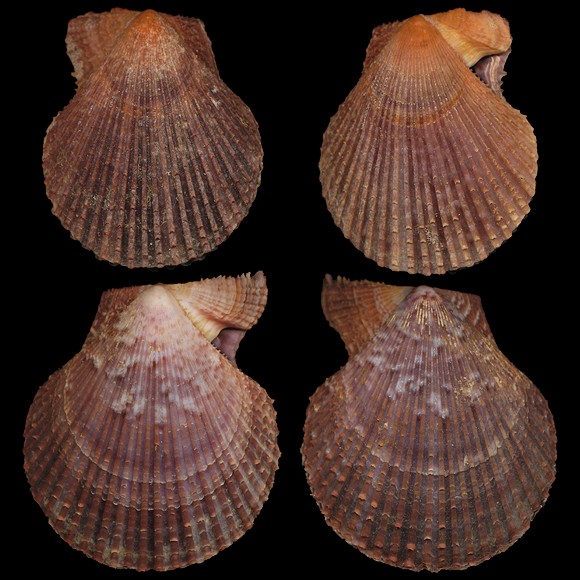
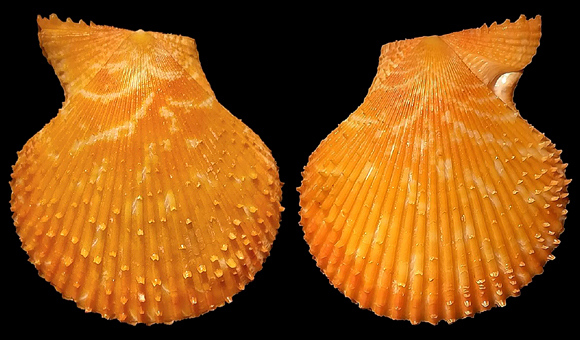
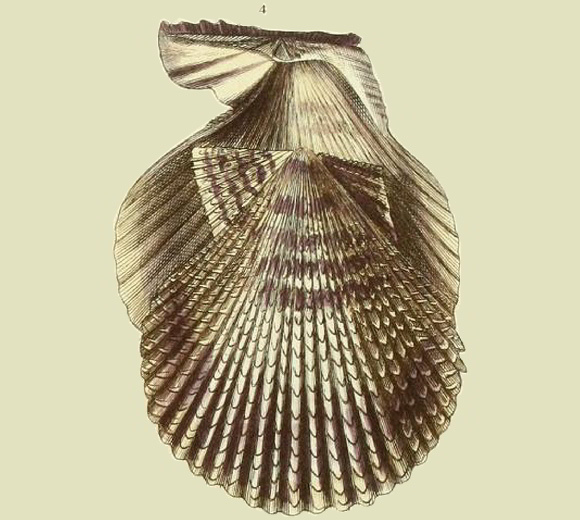
« Shell elongated, with about twenty-eight sharp, narrow echinated ribs ; under valve more convex than the upper one ; auricles very unequal, diagonally ribbed, and longitudinally striated, the larger one in the superior valve is much wrinkled ; whole surface covered with nearly equidistant, rough, concave spines, which are, however, less numerous towards the umbones ; sometimes the spines on the ribs are superceded by imbrications, and only slightly echinated towards the sides of the valves; […] whole surface variously coloured, sometimes clouded etc. »
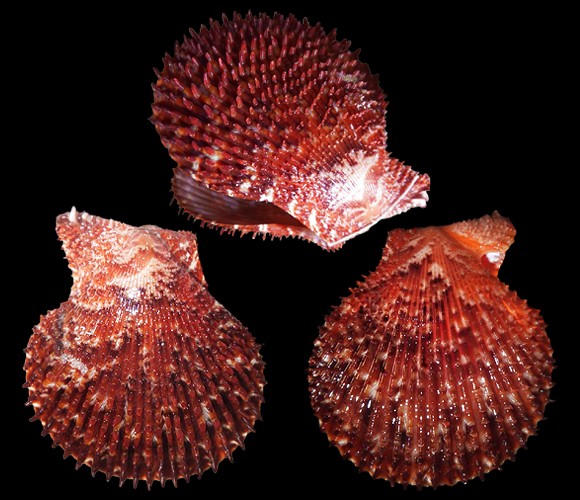
Original pictures provided by Eymard Gilbert (FR).
– (CC BY-NC-SA) –
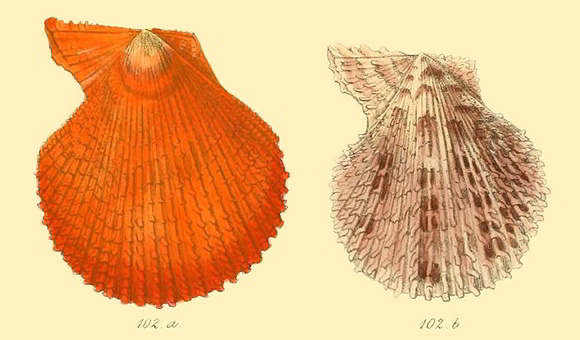
« Shell ovate, higher than long, equilateral, nearly equivalve, valves sharply rayed with thirty to five-and-thirty ribs, ribs narrow, more or less squamate, scales rather distant, sometimes promiscuously stretched out ; colour various ; ears very unequal, squamate. »
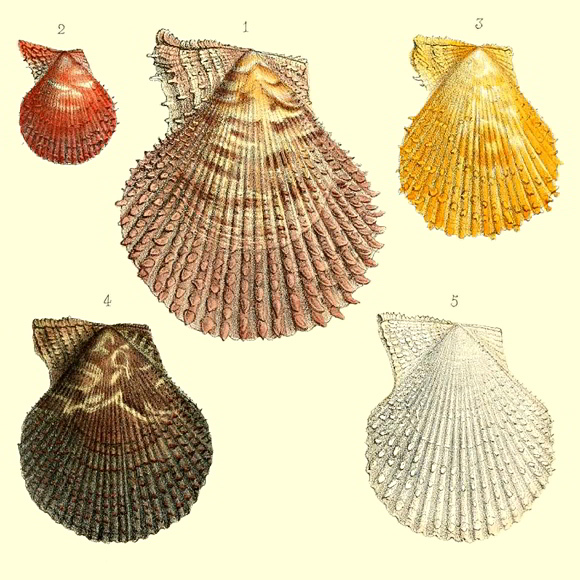
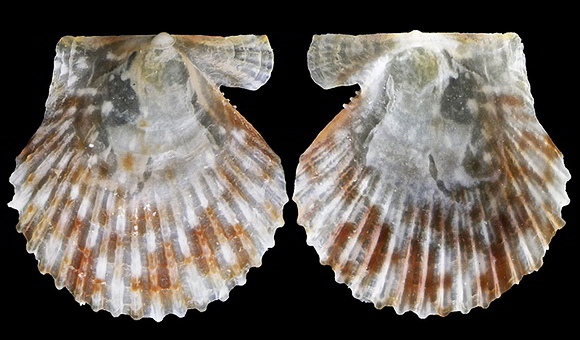

Original picture provided by A. Bertrand (FR).
– (CC BY-NC-SA) –
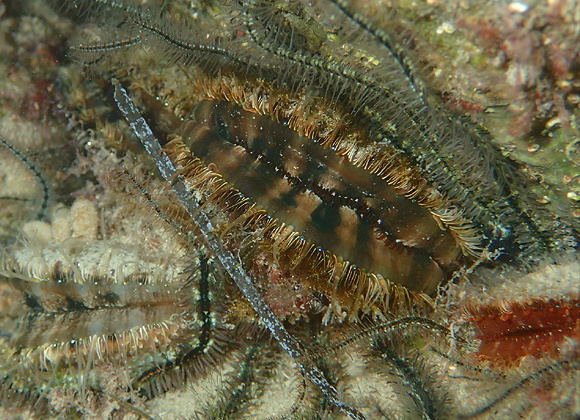
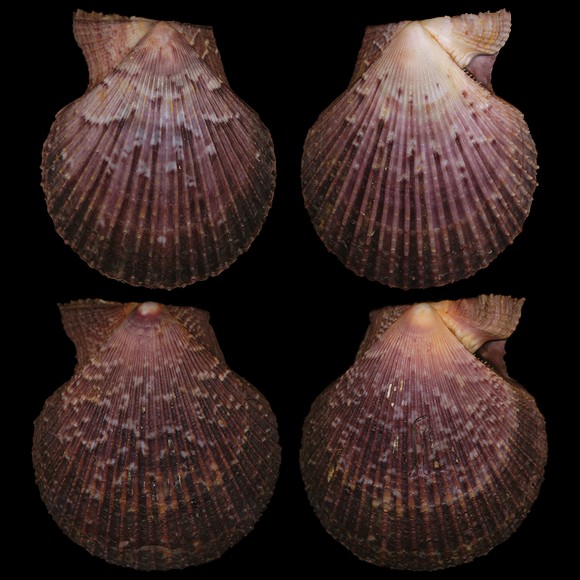
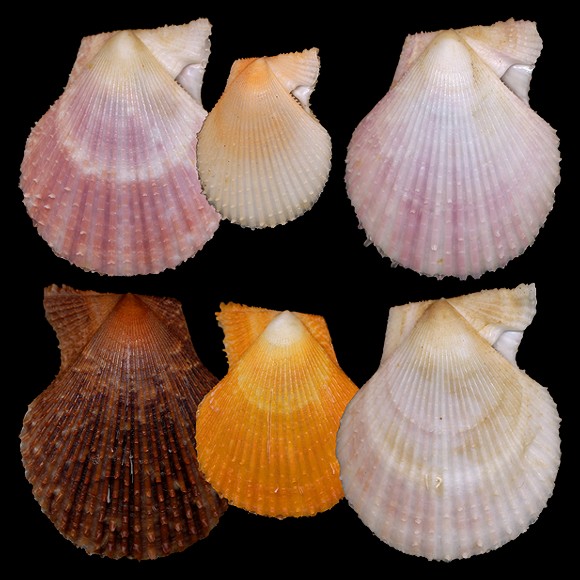
In the Gulf, pale specimens are fished in deeper waters (10-15m) than the dark ones (intertidal to 10m).
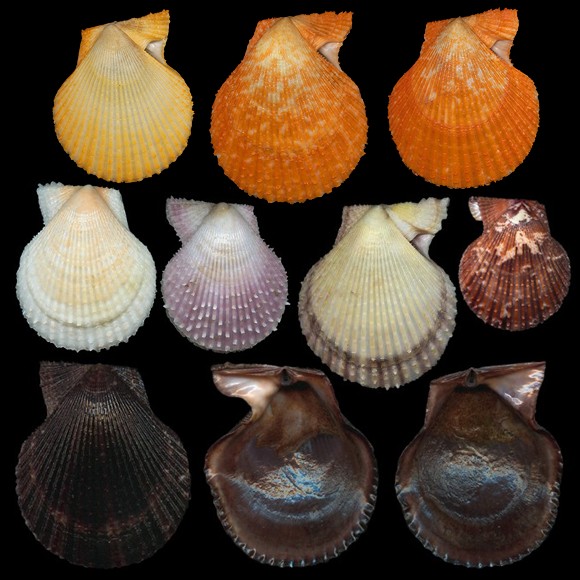
Color set in Brittany: 5-10m deep, in oysters beds on stony bottoms, Quiberon bay, Morbihan. 36-50mm.
